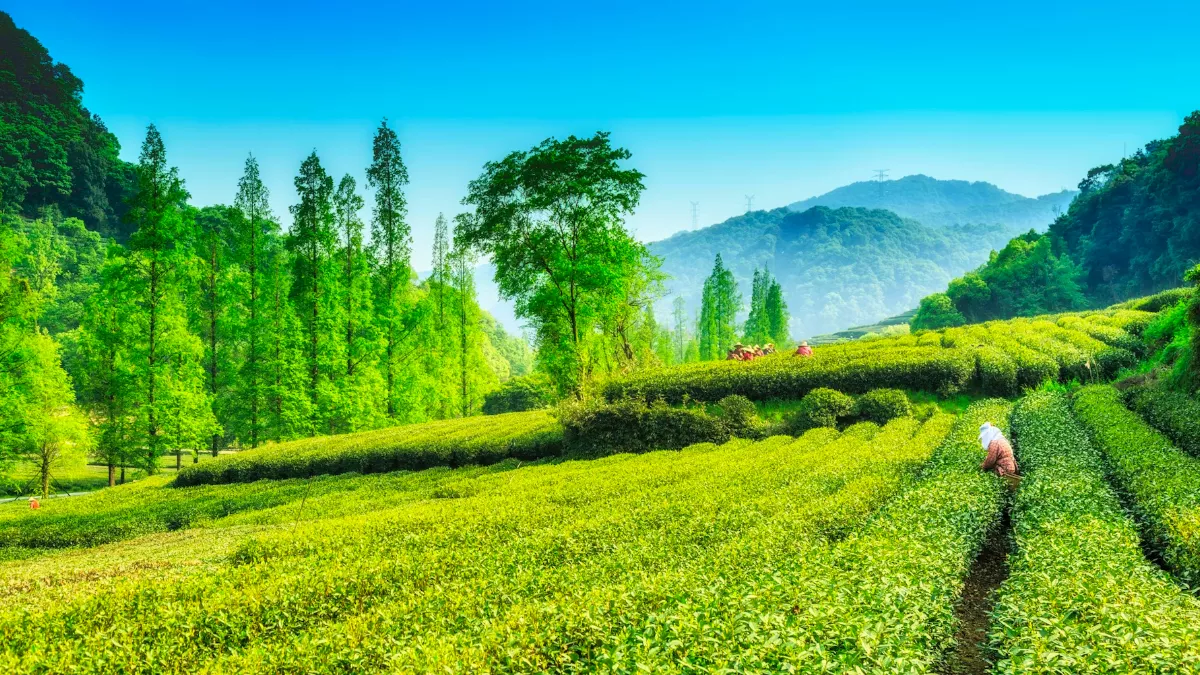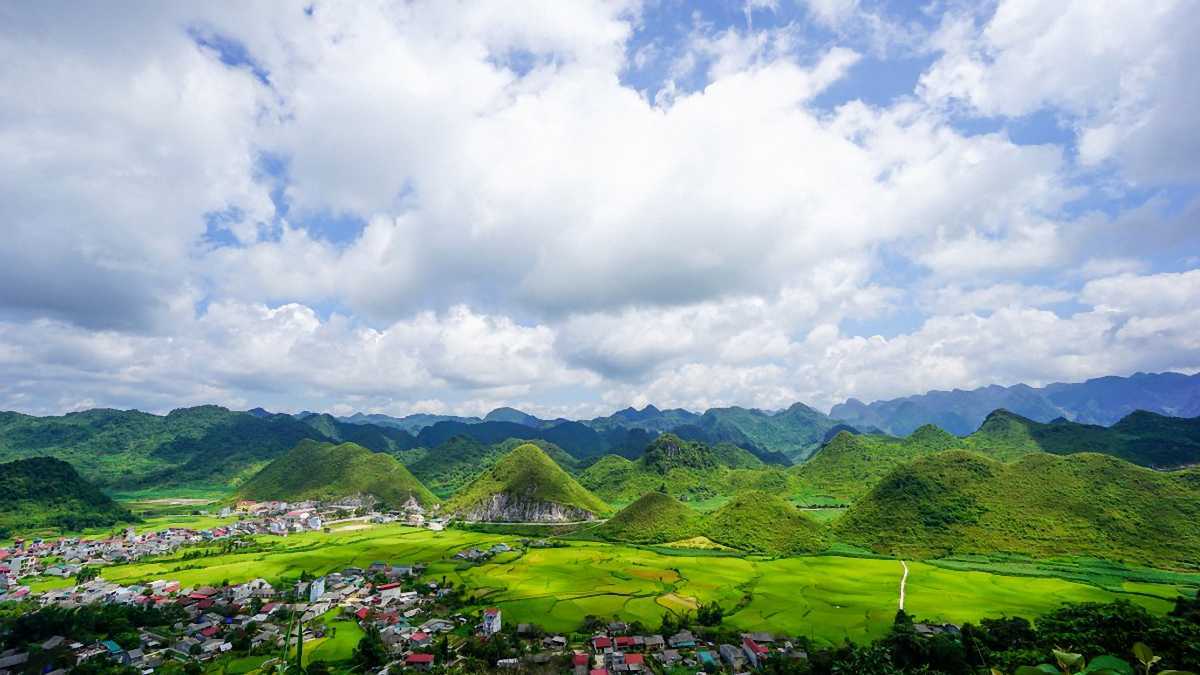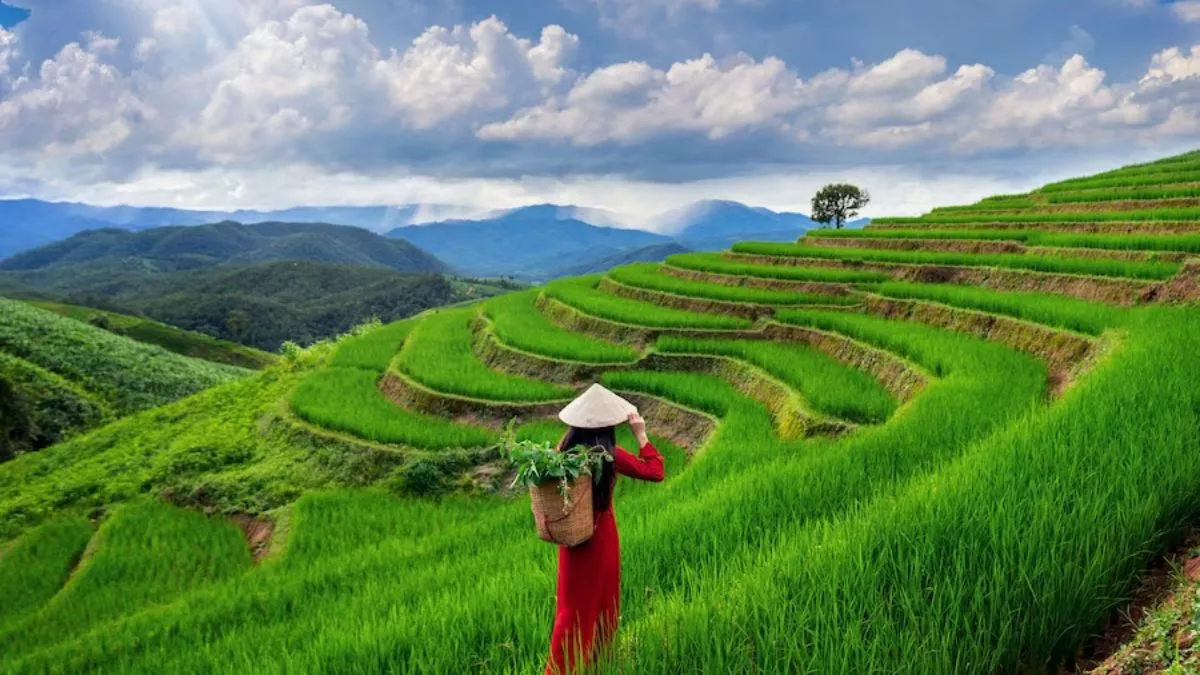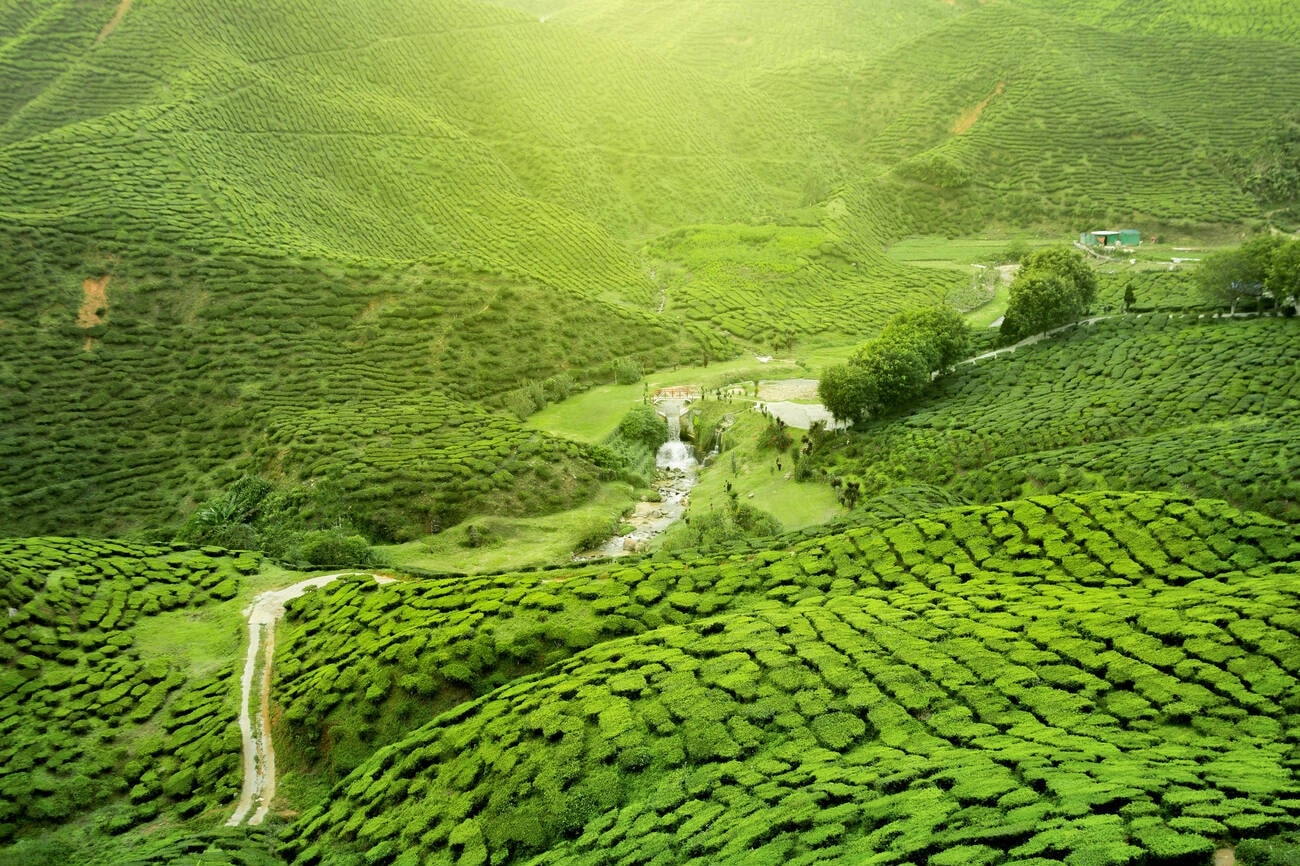Assam The Land of Tea Gardens and Mighty Brahmaputra
Published on February 05, 2025
Introduction: A Glimpse into Assam’s Soul
Nestled in the northeastern part of India, Assam is a land steeped in history, culture, and natural beauty. Known as the "Land of Tea Gardens and the Mighty Brahmaputra," this enchanting state offers a unique blend of lush greenery, vibrant traditions, and breathtaking landscapes. From its sprawling tea estates that produce some of the world’s finest teas to the majestic Brahmaputra River that carves its way through the heart of the region, Assam is a destination like no other. Whether you're planning a trip with an Assam tour package, or simply exploring the region on your own, this beautiful state promises an unforgettable experience.
This blog delves deep into the essence of Assam, exploring its iconic tea gardens, the lifeblood of its economy; the mighty Brahmaputra River, which shapes its geography and culture; its rich biodiversity, diverse tribal communities, and much more. Whether you’re a nature enthusiast, a history buff, or simply someone looking for an escape into serenity, an Assam tour package can help you discover the best of this incredible region. So sit back, relax, and embark on a journey through 4000 words of discovery, wonder, and awe.

The Tea Gardens of Assam: A Legacy of Flavor and Heritage
A Brief History of Tea in Assam
Assam is synonymous with tea, and rightly so—it is one of the largest tea-producing regions in the world. The story of Assam tea dates back to the early 19th century when British colonialists discovered wild tea plants growing in the jungles of Upper Assam. Unlike Chinese tea varieties, these indigenous plants were robust and suited to the region's tropical climate. Recognizing their potential, the British established plantations across Assam, laying the foundation for what would become a global industry.
Today, Assam produces over half of India’s total tea output, contributing significantly to both domestic consumption and international exports. Its signature malty flavour and strong aroma make it a favourite among tea connoisseurs worldwide. Whether enjoyed as a morning brew or blended into popular beverages like masala chai, Assam tea holds a special place in households globally.
Exploring Assam’s Tea Gardens
Visiting Assam’s tea gardens is akin to stepping into a living postcard. Stretching endlessly across rolling hills and fertile plains, these estates are a sight to behold. Rows upon rows of neatly trimmed tea bushes form geometric patterns against the backdrop of misty mountains and azure skies. The air is filled with the earthy fragrance of freshly plucked leaves, creating an atmosphere of tranquillity and nostalgia.

Some of the most famous tea gardens in Assam include:
- Tocklai Tea Research Center: Established in 1911, this is the oldest and largest tea research institute in the world. It plays a pivotal role in developing new cultivation techniques and improving crop yields.
- Dibrugarh Tea Estates: Often referred to as the "Tea City of India," Dibrugarh is home to numerous estates where visitors can witness the entire tea-making process—from plucking to processing.
- Jorhat Tea Gardens: Located near Jorhat, another hub of tea production, these estates offer guided tours and tastings, allowing tourists to savour the nuances of different tea grades.
Life in the Tea Gardens
Behind every cup of Assam tea lies the hard work and dedication of thousands of labourers who call the tea gardens their home. Most workers belong to indigenous tribes such as the Adivasis, brought to Assam by the British during the colonial era. Despite modern advancements, traditional methods of hand-picking and processing remain integral to maintaining the quality of Assam tea.
Life in the tea gardens revolves around a close-knit community bound by shared traditions and rituals. Festivals like Bihu bring people together, filling the air with music, dance, and laughter. However, challenges persist, including issues related to wages, healthcare, and education. Efforts are underway to address these concerns and improve living conditions for tea garden workers.

Sustainable Practices in Tea Cultivation
In recent years, there has been a growing emphasis on sustainable practices within the tea industry. Many estates have adopted organic farming methods, reduced chemical usage, and implemented water conservation techniques. Eco-friendly certifications such as Rainforest Alliance and Fair Trade ensure that consumers can enjoy their favourite beverage guilt-free, knowing it was produced responsibly.
Tourism initiatives also play a crucial role in promoting sustainability. Homestays and eco-resorts located within tea estates allow visitors to experience rural life while supporting local economies. By choosing ethical tourism options, travellers contribute directly to the well-being of communities dependent on tea cultivation.

The Mighty Brahmaputra River: Lifeline of Assam
Geography and Significance
No discussion about Assam is complete without mentioning the Brahmaputra River, one of the longest rivers in Asia. Originating in Tibet as the Yarlung Tsangpo, it flows through Arunachal Pradesh before entering Assam, where it widens dramatically and becomes a defining feature of the landscape. Spanning nearly 2,900 kilometres, the river eventually merges with the Ganges in Bangladesh, forming the Sundarbans delta.
For Assamese people, the Brahmaputra is more than just a geographical entity—it is a lifeline that sustains agriculture, transportation, and livelihoods. Its fertile alluvial soil supports rice paddies, jute fields, and other crops, making Assam the “Rice Bowl of India.” Additionally, the river serves as a vital artery for trade and commerce, connecting remote villages to urban centres.
Seasonal Dynamics
The Brahmaputra exhibits remarkable seasonal variations. During the monsoon months (June to September), heavy rainfall causes the river to swell, often leading to floods that inundate vast areas. While destructive, these floods also replenish the soil with nutrient-rich sediments, ensuring bountiful harvests in subsequent seasons.
In contrast, the dry winter months reveal sandbars known as chars and islands called saporis. These temporary landforms provide grazing grounds for livestock and serve as habitats for migratory birds. The ever-changing nature of the Brahmaputra adds to its mystique, inspiring countless legends and folklore.

Cultural Importance
The Brahmaputra occupies a central position in Assamese mythology and spirituality. According to ancient texts, the river is considered sacred and believed to possess purifying properties. Numerous temples and shrines dot its banks, attracting pilgrims throughout the year.
One notable example is the Umananda Temple, situated on Peacock Island—the world’s smallest inhabited river island. Dedicated to Lord Shiva, this temple draws devotees seeking blessings and solace. Similarly, the annual Ambubachi Mela at Kamakhya Temple celebrates the menstruation cycle of Goddess Kamakhya, symbolizing fertility and renewal—a concept closely tied to the river itself.
Adventure and Recreation
Beyond its cultural significance, the Brahmaputra offers ample opportunities for adventure and recreation. River cruises along its tranquil waters provide panoramic views of lush forests, quaint villages, and majestic wildlife. Luxury houseboats equipped with modern amenities cater to discerning travellers, while budget-friendly options appeal to backpackers.
For thrill-seekers, activities like rafting, kayaking, and angling promise adrenaline-pumping experiences. Anglers flock to the river in search of prized catches such as golden mahseer, a species renowned for its fighting spirit. Birdwatchers, too, find delight in spotting rare avian species like the greater adjutant stork and Bengal florican.
Environmental Challenges
Despite its grandeur, the Brahmaputra faces numerous environmental threats. Deforestation, illegal mining, and industrial pollution have degraded its ecosystem, endangering aquatic life and human settlements alike. Climate change exacerbates the situation, causing erratic weather patterns and increased flooding frequency.
Conservation efforts are underway to mitigate these challenges. Afforestation drives aim to restore degraded lands, while awareness campaigns educate locals about sustainable resource management. International collaborations between India, China, and Bangladesh seek to address transboundary issues affecting the river’s health.
Biodiversity Hotspot: Kaziranga National Park and Beyond
Kaziranga: Home to the One-Horned Rhino
Assam boasts unparalleled biodiversity, with Kaziranga National Park standing out as a crown jewel. Declared a UNESCO World Heritage Site, this park is home to two-thirds of the world’s population of Indian one-horned rhinoceroses. Other flagship species include Asiatic elephants, Royal Bengal tigers, swamp deer, and clouded leopards.

Spread across 858 square kilometres, Kaziranga encompasses grasslands, wetlands, and dense forests, providing diverse habitats for its inhabitants. Jeep safaris and elephant rides allow visitors to observe wildlife up close, while birdwatching excursions showcase over 500 avian species.
Other Wildlife Sanctuaries
While Kaziranga steals the limelight, Assam harbours several other protected areas worth exploring:
- Manas National Park: Another UNESCO World Heritage Site, Manas is celebrated for its Project Tiger initiative and rich avifauna.
- Nameri National Park: Ideal for trekking and rafting, Nameri teems with exotic flora and fauna.
- Pobitora Wildlife Sanctuary: Often dubbed “Mini Kaziranga,” Pobitora boasts the highest density of rhinos per square kilometre.
Flora and Fauna
Assam’s varied topography supports an incredible array of plant and animal life. Tropical rainforests harbour medicinal herbs and orchids, while bamboo groves dominate lower elevations. Endangered species like the hoolock gibbon and Gangetic dolphin thrive in specific niches, underscoring the region’s ecological importance.
Rich Tribal Heritage: Celebrating Diversity
Assam is a melting pot of ethnicities, with over 30 recognized tribes contributing to its cultural tapestry. Each community possesses distinct customs, languages, and art forms, enriching the state’s heritage.
Major Tribes
- Ahoms: Descendants of Tai warriors, Ahoms ruled Assam for six centuries, leaving behind architectural marvels like Sivsagar’s Rang Ghar.
- Bodos: Known for their weaving skills, Bodos celebrate festivals like Bathow Puja with great fervour.
- Mishing: Inhabitants of flood-prone areas, Mishings excel in fishing and agriculture.
Festivals and Cuisine
Assamese festivals revolve around agricultural cycles, reflecting harmony with nature. Bihu, celebrated thrice annually, marks the onset of spring, harvest season, and New Year. Traditional dishes like khar (alkaline curry), pitha (rice cakes), and fish tenga (sour fish curry) tantalize taste buds with their simplicity and depth of flavour.
Embracing Assam’s Splendor
Assam truly embodies the phrase “God’s Own Country.” Its verdant tea gardens, mighty Brahmaputra, abundant wildlife, and vibrant culture weave together a narrative of resilience, diversity, and grace. Whether you’re sipping a steaming cup of Assam tea, cruising along the Brahmaputra, or marvelling at a rhino in Kaziranga, every moment spent here leaves an indelible impression.
